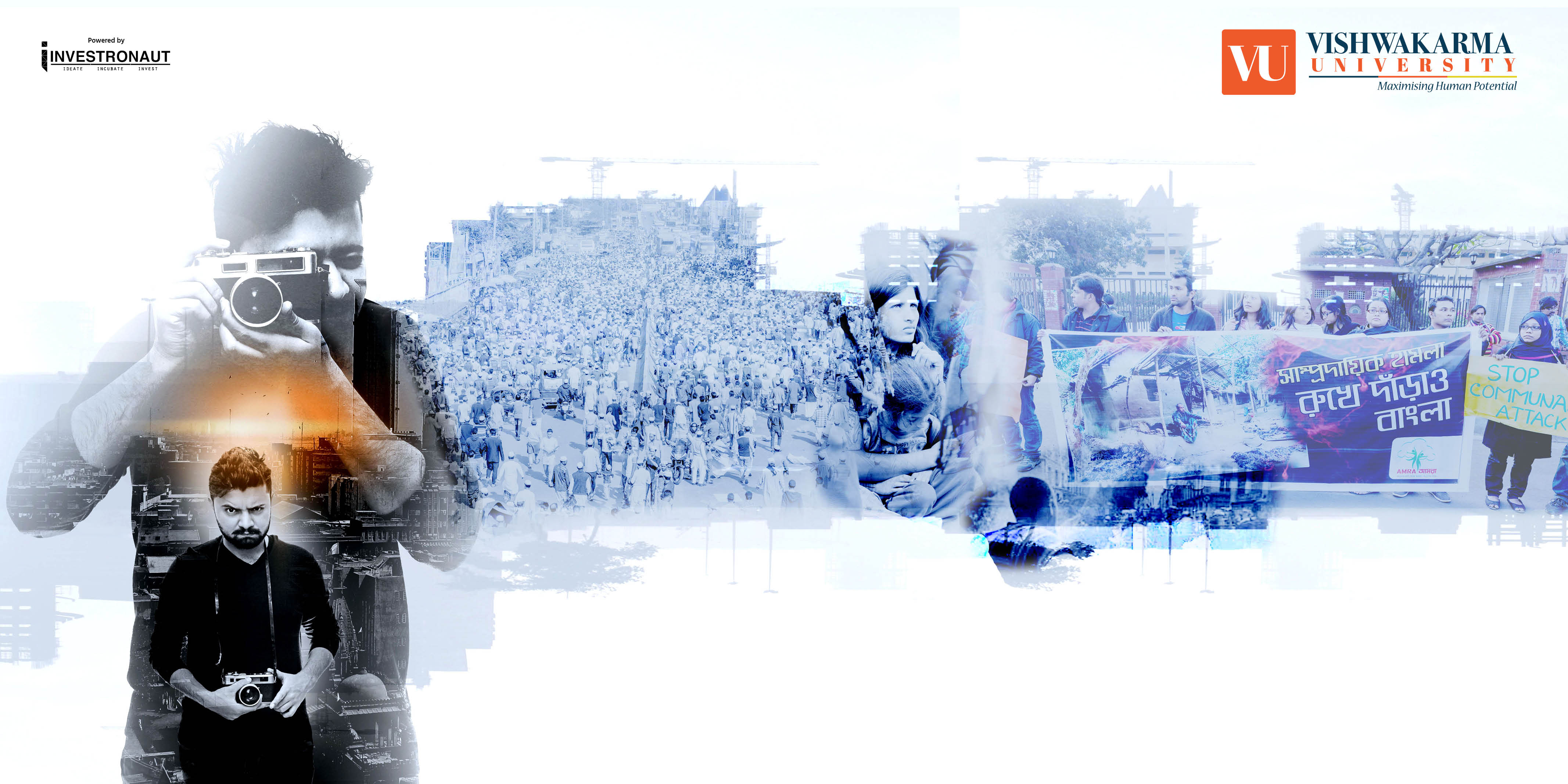
For many of us the massive civil unrest of 2016 in Kashmir was the first of its kind that shook us out of our urban complacency, made us pause and take notice. Soul slashing pictures of hundreds of youth blinded by pellets moved us emotionally irrespective of which side of the opinion one subscribed to. In another instance, last year, pictures of dust smeared Omran Daqneesh, a Syrian boy sitting still and stunned after an air strike became a stark reminder of the horrors of the war. Did you ever think that there was always an invisible person braving through chaos and violence, trying to capture these compelling but risky shots? He is a photojournalist.
To capture or not to capture.
Often photographers find themselves trapped between a rock and a hard place especially while covering the conflict ridden regions. In 1993 Kevin Carter clicked the picture of a malnourished girl in Sudan being observed by a vulture in the background, a symbol of death in most cultures. The picture sparked a debate and people still continue to question the morality of the photographer. How could he busy himself taking a picture instead of offering help?- was the usual rhetoric. The same argument is used for most pictures where the subject is portrayed in crisis.
Kevin Carter committed suicide three months after clicking the picture. The jury is divided whether his guilt for not being able to offer help or his own impoverished circumstances in life that made him take the drastic step. His suicide note read that he was depressed, had no money for phone bills, rent, child care and that he was haunted by the memory of wounded children.
So what is the solution to this dilemma? Should photojournalists hang up their boots and stop doing what they do? Should we all assume that the world is a la la land? Looking away from difficult pictures will not change the reality. We need to realize that photojournalists are not responsible for the sufferings of the world. And in most cases photographers are not in a position to offer any help. The least they can do is to take pictures and carry the message to a larger world that can pressurize the people in positions of power to do something about it.
A good photograph captures real moments and raw emotions which can evoke strong feelings of joy, sadness, loss, shock or empathy without using words. It makes people look and look a little longer! It can translate into reflection and a single picture can sometimes become a movement for help. Steve McCurry’s famous portrayed picture “The Afghan Girl” with her piercing green eyes made the world take notice of the refugee crisis in Afghanistan. It is to his credit that the Afghan Children’s fund was founded j and more than 1 million dollars were raised. His work, along with many other noted photojournalists has shown hope and light in the dark tunnel.
We should not forget that these photographers often operate from some of the most hostile and dangerous quarters of the world. Sometimes they click pictures at the cost of their emotional and physical health. A lot of journalists suffer from depression and Post Traumatic Stress Disorder (PTSD) after spending considerable time in conflict and famine ridden regions.
Photojournalists often have to navigate a tightrope walk between capturing a compelling image and being sensitive to the vulnerable subjects.
Crucifying the photographer will change nothing. A picture that makes us challenge our comfort zone is an opportunity for us to introspect and reflect on our privileges or do something to make this world a better place. Photographers are merely messengers, shooting the messenger will mute the important message from spreading.
Doctored images.
With new technologies the integrity of photojournalists and the organizations they work for, is being questioned. Some photojournalists have been caught indulging in the malpractice. Often photoshopped and digitally tampered pictures appear on the covers of magazine and other digital media portals.
Even famous and prestigious TIME magazines couldn't resist the lure to tamper with the original pictures. In 1994, TIME magazines came under severe criticism for manipulating the picture of OJ Simpson, arrested for murder by making him look darker and devilish. TIME later apologized to it’s readers.
Accuracy is the benchmark of journalism. Pictures, like written records are a historical document for posterity to make sense of the past. Putting out deceptive pictures in the public domain is a breach of the ethical code and should be curbed by all means.
Photojournalism and the power of a good image.
Ever since the invention of the camera in 1839, photography has kept company with death and suffering. Spanish Civil war was the first war to be witnessed or covered in the modern sense by photojournalists. It brought the conflict to the intimate proximity of peoples homes. But photojournalism goes just beyond war and death.
A photograph is a curious object. On the one hand it is a symbol of human vulnerability and fragility as the moment captured is irreversibly and irremediably lost. On the other hand, it counters that fragility since the captured moment is forever rescued from loss and oblivion since it is frozen in time. The photograph , therefore, is an effective witness of a narrative, and the photographer the creator of this narrative. The narrative captured will reflect the photographer’s perception of the moment.
The age old cliche “a picture is worth a thousand words” forms the backbone of photojournalism. Just like journalists use their pen and paper to tell a story, photojournalists convey a visual story using their camera. We are all visual beings and more than half of our brain’s computational power is connected to sight. Our eyes are the doors to the world and it’s through them that we make any sense of the world. Photojournalism thrives on this quality.
References- https://artplusmarketing.com/the-ethics-of-photojournalism-e2e2a7abf621
Authored by Richa Singh, Content Writer, Investronaut



